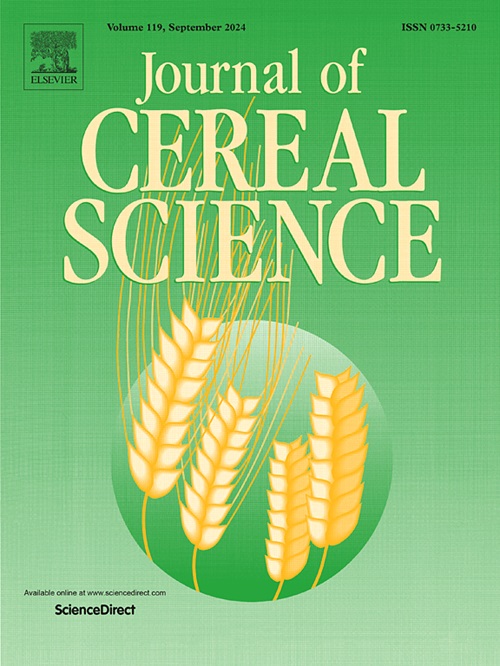发芽和不同碾磨程度对米糠营养特性的影响
IF 3.7
2区 农林科学
Q2 FOOD SCIENCE & TECHNOLOGY
引用次数: 0
摘要
米糠是一种营养丰富的大米加工副产品,目前尚未得到充分开发。虽然在糙米加工过程中对发芽进行了广泛的研究,但从糙米加工过程中获得的关于发芽对米糠影响的信息有限。本试验旨在研究不同碾磨度(2%、4%、6%、8%)米糠发芽后营养成分的变化。结果表明,随着碾磨程度的增加,蛋白质和GABA含量增加,膳食纤维、酚类化合物、灰分和脂类含量降低。同时,萌发显著提高了米糠中蛋白质(高达40%)、总膳食纤维(高达44%)、结合酚类化合物(高达18%)和GABA(高达37%)的含量,降低了灰分、游离酚类化合物和植酸的含量。发芽能显著降低米糠中砷、镉、铅等重金属的含量。脂质组学分析表明,种子萌发可以显著改善其脂质组成,产生更多的功能性脂质。上述结果表明,在适当的碾磨条件下进行发芽处理可以显著提高米糠作为食品原料的应用前景。本文章由计算机程序翻译,如有差异,请以英文原文为准。

The effects of germination and different milling degrees on the nutritional properties of rice bran
Rice bran is a nutritious by-product of rice processing that is yet to be fully developed. Although germination has been extensively studied for the processing of brown rice, information regarding its impact on rice bran obtained from such processing is limited. This study aimed to investigate the change of nutritional components in rice bran obtained from different milling degrees (2 %, 4 %, 6 %, and 8 %) after germination. The results showed that with the increase of milling degree, the contents of protein and GABA increased and the content of dietary fiber, phenolic compounds, ash, and lipids decreased. Meanwhile, germination significantly increased the content of protein (up to 40 %), total dietary fiber (up to 44 %), bound phenolic compounds (up to 18 %), and GABA (up to 37 %) in the rice bran, while decreasing the content of ash, free phenolic compounds and phytic acid. Notably, germination can significantly decrease the content of some heavy metals, such as As, Cd, and Pb, in the rice bran. Lipidomics analysis showed that germination can significantly improve the composition of lipids and generate more functional lipids. These results indicated germination combined with appropriate milling can significantly improve the application prospects of rice bran as a food ingredient.
求助全文
通过发布文献求助,成功后即可免费获取论文全文。
去求助
来源期刊

Journal of Cereal Science
工程技术-食品科技
CiteScore
7.80
自引率
2.60%
发文量
163
审稿时长
38 days
期刊介绍:
The Journal of Cereal Science was established in 1983 to provide an International forum for the publication of original research papers of high standing covering all aspects of cereal science related to the functional and nutritional quality of cereal grains (true cereals - members of the Poaceae family and starchy pseudocereals - members of the Amaranthaceae, Chenopodiaceae and Polygonaceae families) and their products, in relation to the cereals used. The journal also publishes concise and critical review articles appraising the status and future directions of specific areas of cereal science and short communications that present news of important advances in research. The journal aims at topicality and at providing comprehensive coverage of progress in the field.
 求助内容:
求助内容: 应助结果提醒方式:
应助结果提醒方式:


